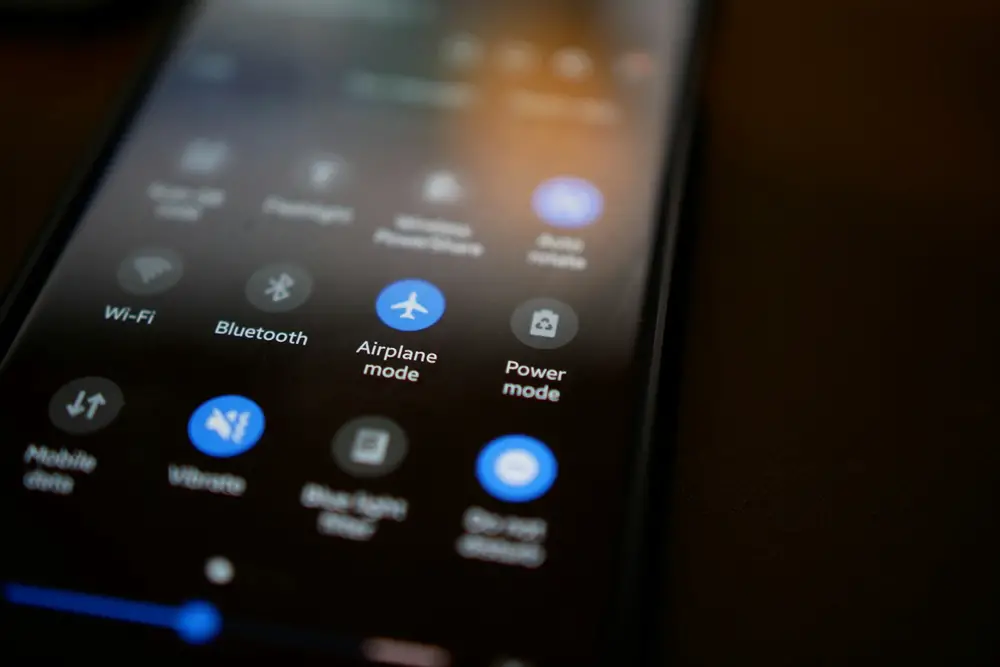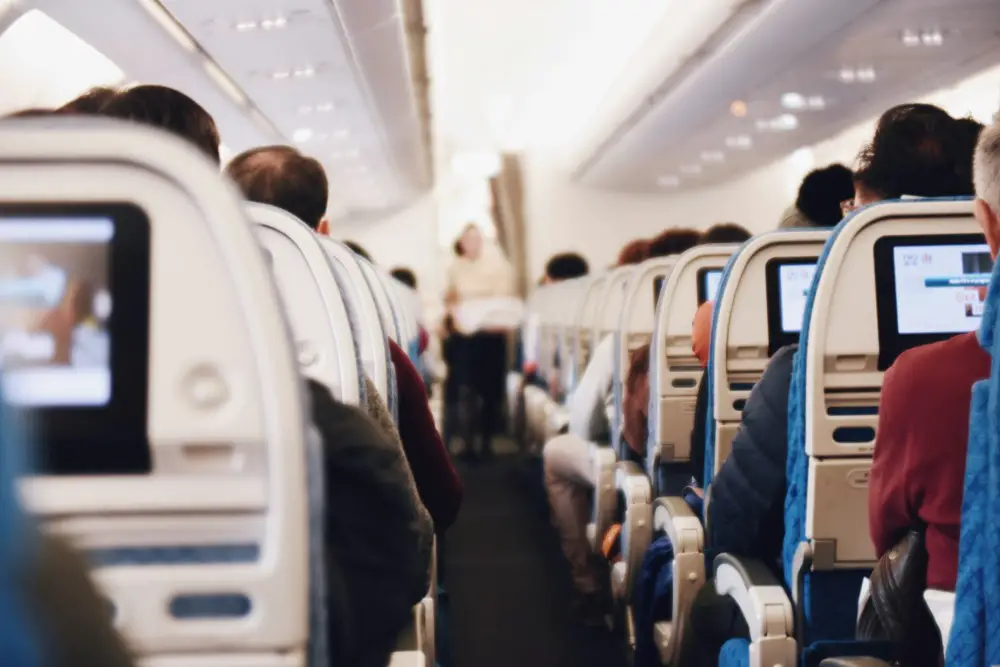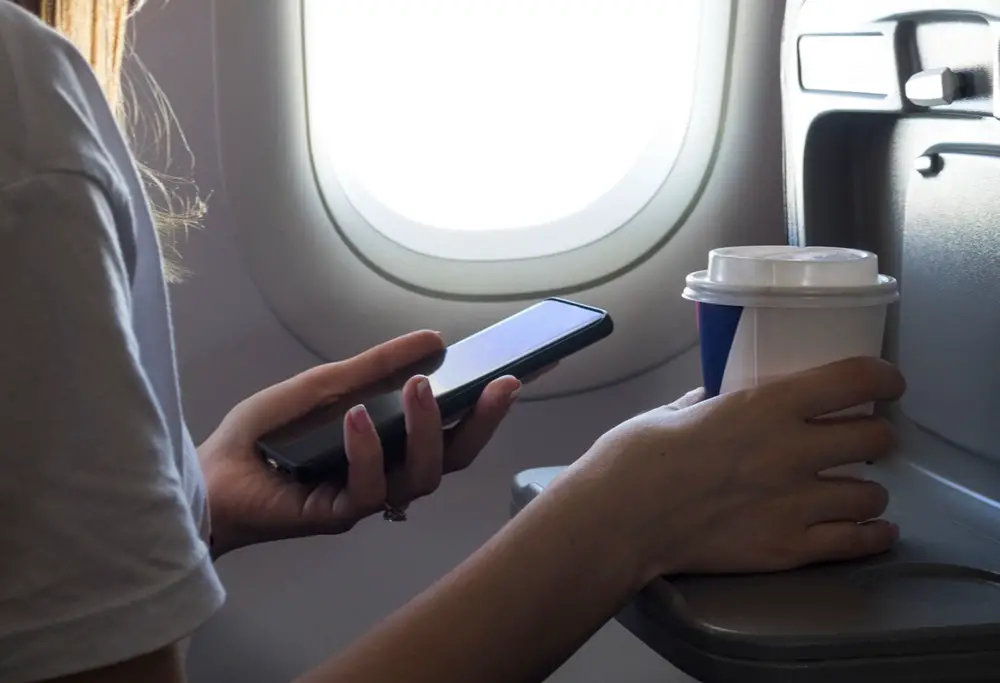In today’s digitally connected world, many travelers wonder if they can use their phones while flying. The short answer is: it depends. Let’s break down the regulations, technological advancements, and best practices to ensure you stay informed and connected without violating any rules.
Understanding the Basics: Airplane Mode
Airplane mode is a crucial feature on smartphones and other electronic devices that helps ensure flight safety and compliance with aviation regulations. When activated, airplane mode disables the device’s ability to send and receive wireless communications, including cellular signals, Wi-Fi, Bluetooth, and NFC. Here’s a deeper dive into why this is necessary and how it works:
Why Airplane Mode is Important
1. Safety Concerns:
- Electronic Interference: Although modern aircraft are well-shielded against interference, there is still a potential risk that signals from numerous devices could interfere with critical aircraft systems. These systems include navigation instruments, communication equipment, and avionics.
- Reducing Cumulative Effect: The simultaneous use of many electronic devices by passengers could potentially amplify interference, especially during critical phases of flight like takeoff and landing.
2. Regulatory Compliance:
- FAA Regulations: The Federal Aviation Administration (FAA) requires that all portable electronic devices be in airplane mode to prevent potential interference with aircraft systems. Similar regulations are in place globally by other aviation authorities.
- Airline Policies: Individual airlines may have specific policies regarding device usage. Adhering to these policies ensures a safe and comfortable flight for all passengers.
How Airplane Mode Works
1. Disabling Cellular Service
When airplane mode is activated, your phone’s ability to connect to cellular networks is turned off. This means no phone calls, text messages, or data usage through your mobile carrier. This prevents any cellular signals from interfering with aircraft systems.
2. Turning Off Wi-Fi and Bluetooth
Airplane mode disables Wi-Fi and Bluetooth. However, after reaching cruising altitude, many airlines permit passengers to turn Wi-Fi and Bluetooth back on, allowing the use of in-flight Wi-Fi and Bluetooth accessories like headphones.
3. NFC and Other Wireless Communications
Near Field Communication (NFC) and other wireless technologies are also turned off in airplane mode. This is part of ensuring that all potential sources of interference are minimized.
The Technological Aspect
1. Hardware Isolation
When airplane mode is activated, the device’s operating system sends a signal to the hardware components responsible for wireless communication, instructing them to power down. This is a more efficient method than manually disabling each component.
2. Power Saving
Airplane mode can also help conserve battery life, as the device stops searching for cellular signals, which can be particularly battery-intensive.

Airplane Mode in Different Devices
1. Smartphones
All modern smartphones come with an airplane mode feature that can be easily accessed through settings or quick access menus. When enabled, an airplane icon typically appears in the status bar.
2. Tablets and Laptops
These devices also feature airplane mode settings. For tablets, the functionality is similar to smartphones. Laptops, especially those with cellular capabilities, will also comply with airplane mode protocols.
3. Smartwatches and Other Wearables
Many wearables include an airplane mode option, ensuring that they do not inadvertently emit signals during a flight.
Best Practices for Using Airplane Mode
1. Before Boarding
Enable airplane mode before the aircraft doors close. This ensures you comply with airline policies from the start.
2. After Takeoff
Once the plane reaches cruising altitude and the crew announces it’s safe, you can turn on Wi-Fi and Bluetooth if needed. Ensure that the core airplane mode setting remains on to keep cellular functions disabled.
3. Landing
Keep airplane mode enabled until the aircraft has landed and the crew has announced it is safe to turn off.
When Can You Use Your Phone on a Plane?
The usage of phones on a plane is regulated to ensure safety and compliance with aviation standards. Understanding when and how you can use your phone during a flight can help you stay connected while adhering to these regulations. Here’s a detailed breakdown:
1. During Taxi, Takeoff, and Landing
Critical Phases of Flight:
- Taxi: This is the period when the plane is moving on the ground, either to the runway before takeoff or from the runway to the gate after landing.
- Takeoff and Landing: These are the most critical parts of the flight. Ensuring that all devices are in airplane mode during these times is crucial for safety.
Device Policies:
- Airplane Mode Requirement: All electronic devices must be set to airplane mode during these phases. This means cellular functions are turned off to prevent interference with the aircraft’s communication and navigation systems.
- Stowing Larger Devices: Larger devices such as laptops and tablets are typically required to be stowed away during these times. They must be securely placed in overhead bins or under the seat in front of you to avoid becoming projectiles in case of turbulence or sudden movements.
2. In-Flight
Once the aircraft has reached cruising altitude, the restrictions on device usage relax somewhat, allowing passengers to use their phones under certain conditions:
Airplane Mode Continues:
- Maintaining Airplane Mode: Even at cruising altitude, your phone must remain in airplane mode. This means that cellular functions (calls and standard text messaging) are disabled throughout the flight.
Wi-Fi and Bluetooth:
- Wi-Fi: Many airlines now offer in-flight Wi-Fi services. After the plane reaches cruising altitude and the seat belt sign is turned off, you can enable Wi-Fi on your phone and connect to the plane’s network.
- Purchasing Wi-Fi: Accessing in-flight Wi-Fi usually requires purchasing a plan. Some airlines offer different pricing tiers based on data usage or duration.
- Free Messaging: Some airlines provide free access to messaging apps like WhatsApp, iMessage, and Facebook Messenger, allowing you to stay in touch without incurring extra costs.
- Bluetooth: You are also allowed to turn on Bluetooth to connect to wireless headphones, keyboards, or other Bluetooth-enabled devices. This is especially useful for using hands-free devices or typing on a tablet.
Entertainment and Productivity:
- Streaming and Browsing: With Wi-Fi access, you can stream videos, browse the internet, and check emails. However, be aware that internet speeds can vary and might not support high-bandwidth activities like streaming HD video or large downloads.
- Offline Content: To ensure uninterrupted entertainment, download movies, music, books, or work documents before your flight. This is a reliable way to stay entertained or productive without depending on in-flight Wi-Fi.

Phone Calls and Text Messages
Voice Calls:
- Cellular Voice Calls: Making voice calls using your cellular network is prohibited during the flight. This is due to the potential for interference with the aircraft’s systems and the disturbance it may cause to other passengers.
- VoIP Services: Voice calls using VoIP services (like Skype or WhatsApp) over in-flight Wi-Fi are generally restricted. Airlines have policies against using these services to maintain a quiet and undisturbed cabin environment.
Read also: 4 Key Things You Should Know About Wi-Fi Calling
Text Messaging:
- Standard Text Messaging (SMS): Since airplane mode disables cellular service, standard SMS messages cannot be sent or received.
- Messaging Apps: You can use internet-based messaging apps while connected to in-flight Wi-Fi. These apps allow you to send texts, photos, and even make video calls, provided the airline’s Wi-Fi policy permits such usage.
Read also: How Safe are Cell Phones?
In-Flight Wi-Fi: The Game Changer
Many airlines now offer in-flight Wi-Fi services. Here’s what you need to know:
- Availability: Not all airlines offer Wi-Fi, and availability can vary by flight route and aircraft type. Check with your airline beforehand.
- Cost: In-flight Wi-Fi can be expensive. Some airlines offer free messaging, but full internet access typically comes at a premium.
- Performance: Expect slower speeds compared to your home or office internet. Streaming video and downloading large files might be limited.
Read also: The Top 10 Advantages and Disadvantages of Mobile Phones
Future Developments
The aviation industry is continuously evolving, and advancements in technology might soon change how we use our devices on planes. For instance:
- Enhanced Connectivity: Future aircraft might be equipped with better technology that allows safe use of cellular networks.
- Regulatory Changes: As safety and technology improve, regulations may be updated to allow more flexibility.
Tips for Using Your Phone on the Plane
- Charge Up: Ensure your devices are fully charged before boarding, as power outlets might not always be available.
- Bring a Power Bank: A portable charger can be a lifesaver on long flights.
- Download Content: Pre-download movies, music, and books to enjoy offline.
- Follow Crew Instructions: Always adhere to the cabin crew’s instructions regarding device usage.
Read also: Dangers of Excessive Use of Cell Phones
Frequently Asked Questions (FAQs)
1) What happens if you use your phone on a plane?
Using your phone on a plane without airplane mode can potentially interfere with aircraft systems, violating safety regulations.
2) Can you text while on a plane?
You can use messaging apps over in-flight Wi-Fi, but standard text messaging (SMS) is unavailable without cellular service.
3) What happens if I don’t put my phone on airplane mode?
Failing to activate airplane mode can cause interference with the aircraft’s navigation and communication systems, compromising safety.
4) Can you use your phone internet on a plane?
Yes, you can access the internet on your phone using in-flight Wi-Fi services provided by many airlines. However, standard cellular data services are typically unavailable due to airplane mode requirements.
Conclusion
Using your phone on a plane is largely about understanding and respecting the rules. While you can’t use cellular services during flight, airplane mode allows you to use in-flight Wi-Fi and Bluetooth. Stay updated with airline policies and technological advancements to make the most of your in-flight experience.
By staying informed and prepared, you can enjoy a connected and smooth journey, whether for work or leisure.

